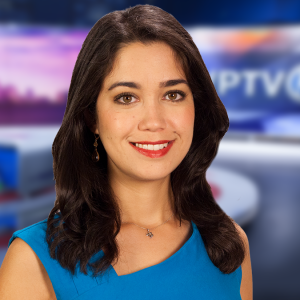Families are still reeling after a fire ravaged 36 homes in the Florida Panhandle earlier this week.
State authorities determined the cause to be from a controlled burn by an outside private contractor, hired by the Florida Fish and Wildlife Conservation Commission to burn nearly 500 acres on June 18. FWC canceled other controlled burns across the state as the investigation continues.
But other agencies here in South Florida are allowed to continue their own burns in our area to prevent any risk for wildfire.
On Thursday, we observed how crews with the Florida Parks Service conducted a controlled burn of 300 acres in Jonathan Dickinson State Park in Martin County.
Controlled burns are used as a tool to manage forests and prevent wildfires. Martin County fire chief William Schodel explained the science behind how it works.
"These burn offs are healthy for the environment," he said.
Crews target dry vegetation, using a torch device to carefully select key areas to burn. The goal is to mimic was happens in nature, said Schodel.
"Throughout the summer months, mother nature sometimes helps us with some of these burn-offs with lightning," he said.
Crews will typically monitor those lightning strike fires and allow them to burn off vegetation under a controlled burn. However, if this doesn't occur as often or in areas where it is needed, crews will wait for the right conditions to conduct their own burns.
Thursday's conditions were perfect and prescribed burns aren't usually decided until the day of.
"They look at humidity. They also look at wind direction. That kind of tells them where and when to light the fires," said Schodel.
Elyssa Finkelstein, a spokesperson for the Florida Department of Environmental Protection, who oversaw Thursday's burn, said it is ideal for the soil to be damp.
"This helps protect tree roots and another important habitat. Typically, the burn is called off if it begins to rain heavily, though this usually wouldn’t happen as the burn boss studies the forecast before burning. If there is light rain during the burn, often the team can continue burning," she said.
Finkelstein said before a burn can even begin, the first step is for the burn boss to write the burn prescription. They must be very knowledgeable about the site and make sure fire breaks are around the entire burn area.
The burn boss will contact the team, engines, staff other resources, and have standby staff. Once a team is organized, the burn boss will check the weather forecast to ensure that conditions are ideal for a burn.
Then, crews must obtain an authorization from the Florida Forest Service. Next, they will take the burn team around the burn zone to familiarize with the burn zone, especially if there are burn team members from other parks.
"The burn boss will then pick a corner for a test, light a small area (down-wind edge). If smoke and fire are going with prescription prediction, then they can begin the burn. Tie in the fire, ignited all the way around, team members monitoring areas at all times to ensure nothing is jumping the line. Then they will determine what needs to be completely extinguished. Make hot areas, cold. Burn boss will continue to monitor night of an early morning," said Finkelstein.
The key is burning away dry vegetation that's building up -- what's already burned can't burn again if mother nature strikes.
"We have our rainy season obviously. Then we have a lot of growth after that. So unless we burn off some of the growth to control it, then we can end up with excessive amounts of fuel when we actually do have a fire," said Schodel.
Thanks to the rainy season, Chief Schodel says we should be in good shape against wildfires.
"We're very wet out there right now so it's safe to do controlled burns," he said.
Schodel also explained the complexity in working with areas near homes. Crews carefully let the fire burn all the way up to the natural breaks like dirt roads and creeks and ensure it doesn't interfere with anyone's homes.
Finkelstein added that Florida Parks Service staff go through very rigorous training for prescribed burns.
"Staff are trained and tested in safety protocols, fire behavior, and physical demands. Prescribed fires are planned, set and extinguished by specialized staff. Any prescription fire takes into consideration fuel type, fuel moisture, relative humidity, air temperature, wind speed, wind direction and many other planning factors. These safety measures ensure parks staff are burning in the right conditions and when it is safe to do so," she said in a statement.
Click here for the latest on fire conditions across the state from the Florida Forest Service.
Click here to see a map showing burn authorizations and wildfire activity.



